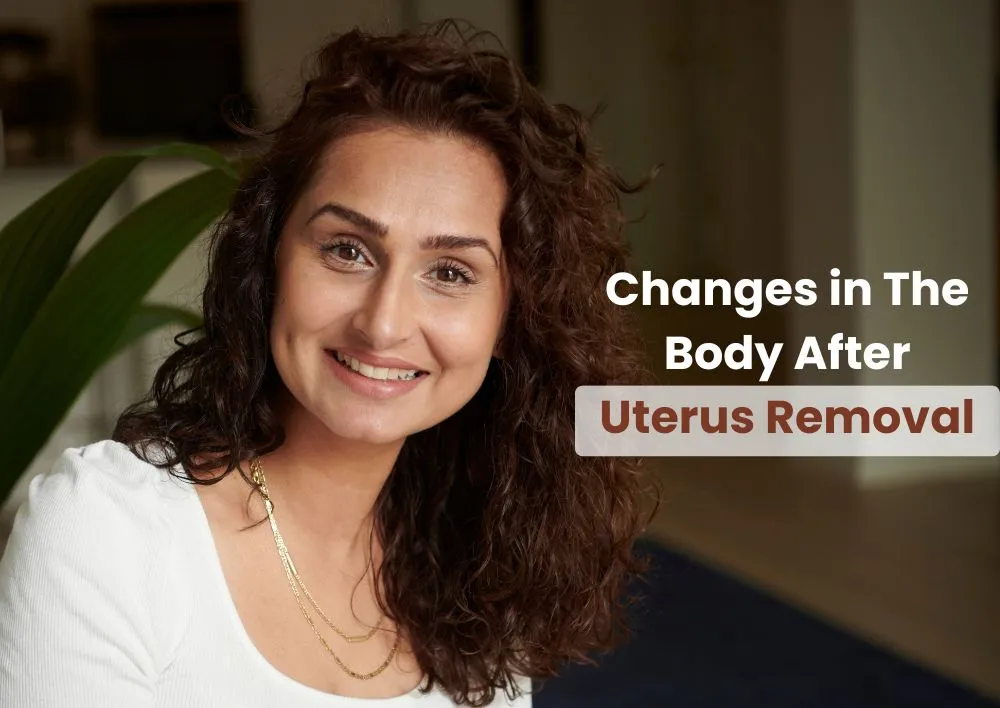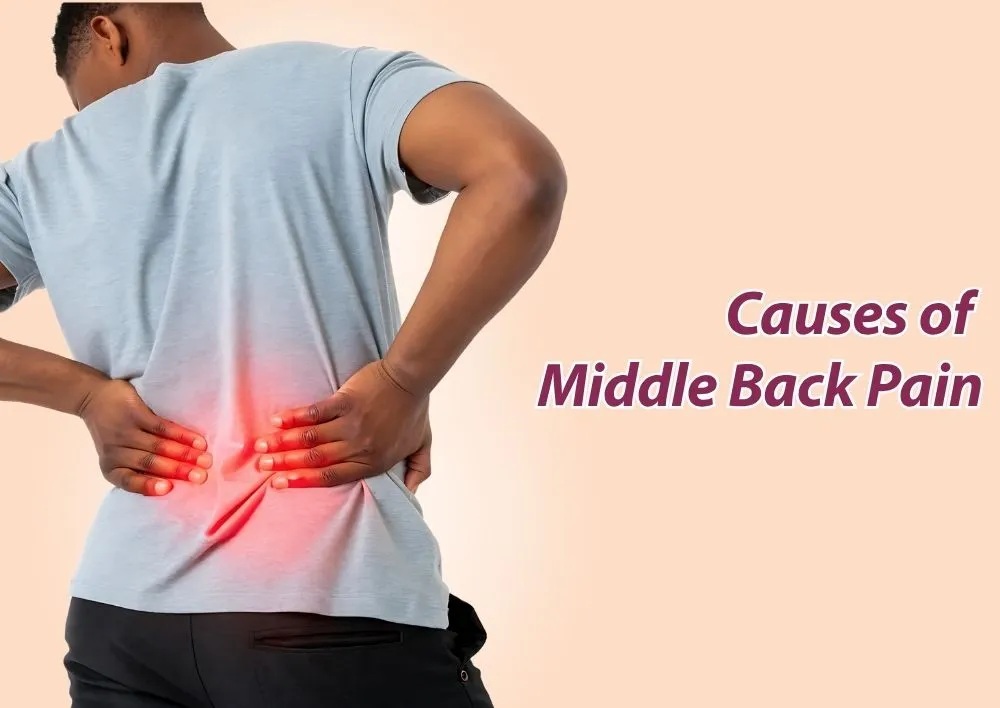Changes in The Body After Uterus Removal
The decision to undergo a hysterectomy, the surgical removal of the uterus, is deeply personal and often comes with a range of emotions and questions. Whether it's due to medical necessity or a choice for individual well-being, this procedure indicates an important turning point in one's life. While the removal of the uterus can bring relief from certain medical conditions or reproductive health issues, you may start experiencing changes in the body after uterus removal.
In this blog post, we'll delve into the different body changes individuals may experience after a hysterectomy.
What is Uterus Removal?
According to Dr. Sadhna Sharma, the best gynae doctor in gurgaon at Miracles Apollo Cradle, Uterus removal surgery, medically termed hysterectomy, is a surgical procedure that involves the partial or complete removal of a female's uterus. Females decide to undergo the procedure to relieve different medical conditions such as uterine fibroids, endometriosis, chronic pelvic pain, or certain cancers. The operation of removing the uterus can be a life-changing experience, not just in terms of addressing health concerns but also in understanding and adapting to the changes that uterus removal brings to the body.
Types of Hysterectomy:
There are several types of uterus removal surgery, each involving the removal of different parts of the reproductive system:
-
Total hysterectomy: This surgical procedure involves removing the entire uterus, including the cervix.
-
Partial hysterectomy: This procedure is also known as subtotal or supracervical hysterectomy, it involves removing only the upper part of the uterus, leaving the cervix intact.
-
Radical hysterectomy: Typically performed in cases of gynecologic cancer, this involves removing the uterus, cervix, part of the vagina, and surrounding tissues.
Why Is a Hysterectomy Performed?
Here are some common reasons why a hysterectomy may be recommended:
-
Uterine Fibroids: Fibroids are noncancerous growths that develop in the uterus. They can cause symptoms such as heavy menstrual bleeding, pelvic pain, and pressure on the bladder or bowel. When fibroids are multiple, large, or causing considerable symptoms that don't respond to other treatments, a uterus removal surgery may be recommended.
-
Endometriosis: Endometriosis is a condition where tissue similar to the lining of the uterus grows outside the uterus, often causing pelvic pain, painful periods, and infertility. If other treatments fail to provide relief, or if the endometriosis is severe and impacting a person's quality of life, a hysterectomy may be considered.
-
Uterine Prolapse: Uterine prolapse occurs when the muscles and ligaments that support the uterus weaken, causing the uterus to descend into the vaginal canal. This can cause pelvic pressure, urinary incontinence, and discomfort. In cases where conservative treatments like pelvic floor exercises or pessaries are inadequate, a hysterectomy may be necessary to correct the prolapse.
-
Gynecologic Cancers: Hysterectomy is a common treatment for various gynecologic cancers, including uterine cancer, cervical cancer, and ovarian cancer. Depending on the type and stage of cancer, a hysterectomy may be performed as part of the primary treatment to remove cancerous tissue and prevent the spread of the disease.
-
Chronic Pelvic Pain: Chronic pelvic pain can have various underlying causes, including adenomyosis (a condition where the tissue lining the uterus grows into the uterine wall), pelvic inflammatory disease (infections of the female reproductive organs), or chronic pelvic inflammatory conditions. If other treatments fail to provide relief and the pain significantly affects daily life, a hysterectomy may be considered as a last resort.
-
Abnormal Uterine Bleeding: Persistent or severe abnormal uterine bleeding that doesn't respond to other treatments, such as medication or endometrial ablation, may warrant a hysterectomy. This can include conditions like menorrhagia (heavy menstrual bleeding) or irregular bleeding due to hormonal imbalances or uterine abnormalities.
How is a Hysterectomy Performed?
Here are the various methods of performing uterus removal surgery:
-
Abdominal Hysterectomy:
-
Incision: In an abdominal hysterectomy, a horizontal or vertical incision is made in the abdomen, typically along the bikini line.
-
Procedure: The surgeon accesses the uterus through this incision and removes it along with the cervix, if necessary. The incision allows for better visualization and access to the pelvic organs, making it suitable for large uterine fibroids, extensive endometriosis, or certain cancer cases.
-
-
Vaginal Hysterectomy:
-
Incision: In a vaginal hysterectomy, the uterus is removed through the vagina without any external incisions.
-
Procedure: The surgeon accesses the uterus through the vaginal canal and detaches it from the surrounding ligaments and tissues. The uterus is then removed through the vagina. A vaginal hysterectomy is often preferred when the uterus is not significantly enlarged and there are no large fibroids or other pelvic abnormalities.
-
-
Laparoscopic Hysterectomy:
-
Procedure: Laparoscopic hysterectomy is a minimally invasive approach where small incisions of usually 0.5 to 1 centimeter are made in the abdomen. A laparoscope, a thin tube with a camera and surgical instruments, is inserted through these incisions.
-
Techniques: There are different techniques for laparoscopic hysterectomy, including total laparoscopic hysterectomy (TLH), laparoscopic-assisted vaginal hysterectomy (LAVH), and robotic-assisted laparoscopic hysterectomy. TLH involves removing the uterus entirely through laparoscopic instruments, while LAVH combines laparoscopic and vaginal approaches.
-
-
Robotic-Assisted Hysterectomy:
-
Procedure: Robotic-assisted laparoscopic hysterectomy is similar to traditional laparoscopic hysterectomy but utilizes robotic arms controlled by the surgeon to perform the procedure with enhanced precision.
-
The choice of surgical approach depends on various factors, including the patient's medical condition, the size of the uterus, the presence of pelvic adhesions or scar tissue, and the surgeon's expertise.
What are Body changes After Uterus Removal Surgery (hysterectomy)?
Once the uterus is removed several types of changes occur in the body. Some of the body changes after hysterectomy include:
1. Physical body changes after hysterectomy:
-
Menstrual Cycle Cessation: With the uterus removed, menstruation stops completely. This can bring relief to females who experienced heavy bleeding, painful periods, or menstrual disorders.
-
Hormonal changes after uterus removal: While the ovaries are often left untouched during a hysterectomy, some females may experience hormonal imbalance post-surgery. The hormonal changes after uterus removal can lead to symptoms such as hot flashes, mood swings, and vaginal dryness.
-
Pelvic Floor Changes: The operation of uterus removal can impact pelvic floor function, potentially leading to changes in bladder control or pelvic organ prolapse. Pelvic floor exercises and physiotherapy may be recommended to manage these changes.
-
Surgical Scars: Depending on the type of uterus removal surgery (abdominal, vaginal, or laparoscopic), females may have visible scars. These scars may fade over time.
-
Body Image: Changes in body image, especially if the surgery involves abdominal incisions, scarring, or weight changes, can also impact emotional well-being. It may take time to adjust to these physical changes and accept them as part of one's body.
2. Emotional Changes:
-
Relief: For some individuals, especially those who have been dealing with chronic pain, heavy bleeding, or other uterine-related health issues, a sense of relief may be predominant. The surgery may relieve the physical discomfort and health concerns they've been experiencing, leading to a more positive emotional state.
-
Sadness: Losing the ability to conceive or carry a child can be emotionally challenging for some individuals, even if they don't plan on having children or have already completed their families. This sense of loss can lead to feelings of grief, especially if they had hoped to become pregnant in the future.
-
Changes in Identity and Femininity: Some individuals may experience a transformation in their sense of identity or femininity after a hysterectomy. The uterus is often closely tied to notions of womanhood and fertility, and its removal can prompt individuals to reassess their sense of self. Counseling or support groups can be helpful for those struggling with these feelings.
-
Stress and Anxiety: The uncertainty of surgery, the recovery process, and concerns about the future may contribute to stress and anxiety before and after the procedure. Individuals need to have a support system in place to help them cope with these feelings.
3. Long-term Health Issues:
-
Bone Health: Estrogen, produced by the ovaries, plays an important role in maintaining bone density. Following a hysterectomy, females may be at a slightly higher risk of osteoporosis due to hormonal changes. Regular exercise, a calcium-rich diet, and, if necessary, hormone replacement therapy (HRT) can help alleviate this risk.
-
Heart Health: Estrogen also affects cardiovascular health, and its decline post-uterus removal surgery may impact heart health. Maintaining a healthy lifestyle, including regular exercise, a balanced diet, and managing other risk factors such as high blood pressure and cholesterol, is important.
-
Sexual Health: Changes in hormone levels and pelvic anatomy can affect sexual function and intimacy. Open communication with partners, exploring new forms of intimacy, and seeking guidance from gynecologists may help go through these changes.
What Are Complications of a Hysterectomy?
While hysterectomy is a common and generally safe surgical procedure, like any surgery, it carries potential risks and complications. Some of the complications associated with the operation of uterus removal include:
-
Infection: Infection at the incision site or within the pelvic cavity is a possible complication of hysterectomy. This can occur during or after surgery and may require treatment with antibiotics.
-
Bleeding: Excessive bleeding during or after hysterectomy can occur, leading to the need for blood transfusion or further surgical intervention to control bleeding.
-
Damage to Surrounding Organs: During the surgical procedure, nearby organs such as the bladder, ureters, or intestines may be mistakenly injured. This can result in complications such as urinary tract injury, bowel injury, or fistulas.
-
Blood Clots: Blood clots can occur following surgery, especially if the patient is immobile for an extended period. Blood thinners or compression stockings may be used to reduce the risk of blood clots.
-
Adverse Reaction to Anesthesia: Some individuals may experience complications related to anesthesia, such as allergic reactions, respiratory problems, or negative effects on the cardiovascular system.
-
Urinary Incontinence: Changes in bladder function can occur after hysterectomy, leading to symptoms such as urinary urgency, frequency, incontinence (leakage of urine), or difficulty emptying the bladder (urinary retention).
-
Pelvic Organ Prolapse: Hysterectomy may increase the risk of pelvic organ prolapse, where the pelvic organs, such as the bladder, uterus, or rectum, descend into the vaginal canal. This can lead to pelvic pressure, discomfort, or urinary and bowel symptoms.
-
Sexual Dysfunction: Uterus removal surgery can sometimes lead to changes in sexual function or sensation, including decreased libido, vaginal dryness, or pain during intercourse. These changes may be temporary or permanent and can impact sexual satisfaction and intimacy.
-
Psychological Impact: Some individuals may experience emotional or emotional effects following hysterectomy, such as grief, loss, depression, or changes in body image and self-esteem. Counseling or support groups may help cope with these feelings.
Get the Right Support for a Comfortable Hysterectomy Recovery
-
Emotional Support: The decision to undergo a hysterectomy and the subsequent changes in the body after hysterectomy can be emotionally challenging. It's important to have a support system in place to help go through this transition.
-
Physical Recovery: Recovery from a hysterectomy can vary depending on the type of surgery and individual health factors. It's important to follow post-operative instructions provided by healthcare professionals, including taking prescribed medications, avoiding heavy lifting or strenuous activity, and attending follow-up appointments.
-
Seeking Professional Help: If you experience constant or concerning symptoms after a hysterectomy, don't hesitate to reach out to your gynecologist. Whether it's managing menopausal symptoms, managing sexual health concerns, or dealing with pelvic floor issues, there are various treatments and therapies available to improve the quality of life post-surgery.
Conclusion:
The decision to undergo a hysterectomy is an extremely personal one that can have deep effects on both the body and the mind. While the physical and emotional changes in the body after hysterectomy surgery that follow may present challenges, also offer opportunities for growth, strength, and a newfound appreciation for the body's capacity to adapt and heal. By adopting self-care, seeking support, and staying informed about post-hysterectomy health considerations, individuals can tackle this transformative journey toward holistic well-being and empowerment.
For your concerns related to body changes after uterus removal, Consult the best female gynae near you at Miracles Healthcare and start your transformative journey today.
Frequently Asked Questions
You may experience changes in hormone levels, absence of periods, and possible fatigue during recovery.
Menstruation stops permanently, and you can no longer get pregnant; hormonal changes may occur if the ovaries are also removed.
Side effects can include pelvic pain, early menopause (if ovaries are removed), mood changes, and reduced libido in some cases.
Some women may gain weight post-surgery due to hormonal changes or reduced physical activity during recovery.
There’s usually no major change in body shape, but some may notice abdominal bloating or muscle tone changes temporarily.
Avoid processed foods, high-fat meals, sugary snacks, and carbonated drinks to support healing and prevent constipation.
Miracles Healthcare is one of the best hospitals for uterus removal surgery in Gurgaon, with a team of expert gynecologists and advanced laparoscopic technology.















Was the information useful?
39 0